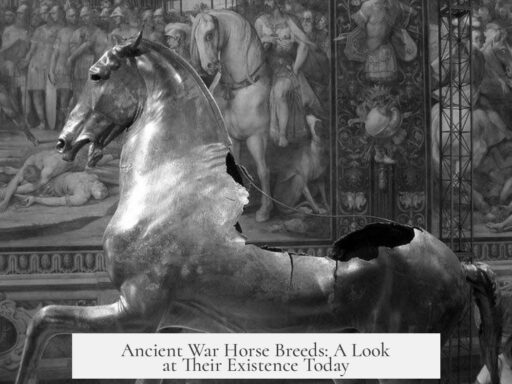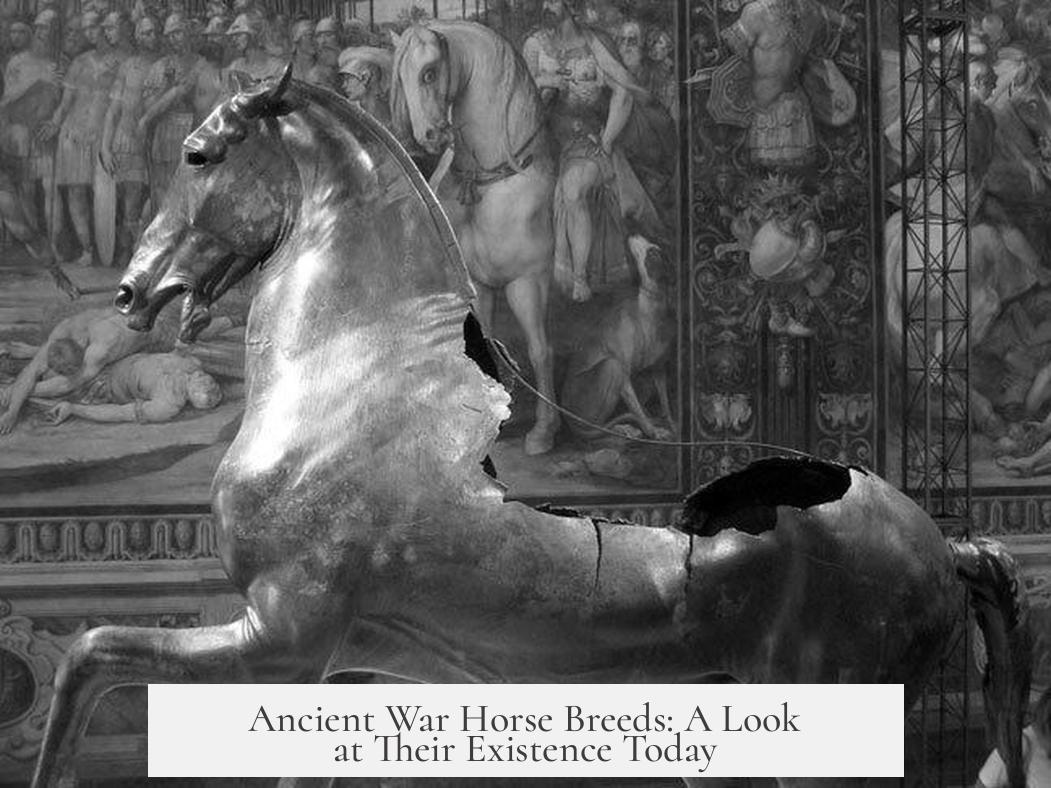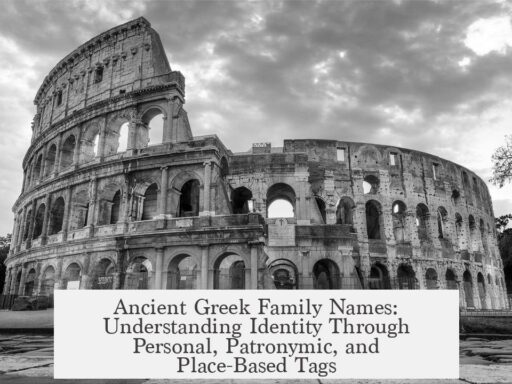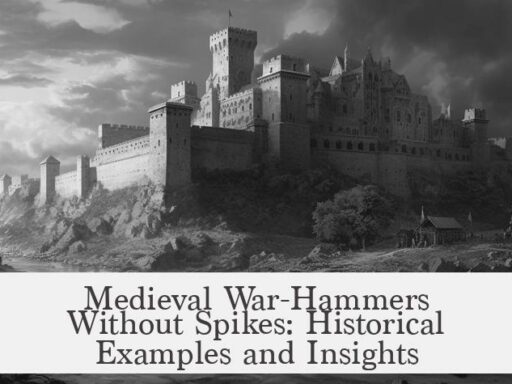Ancient war horse breeds known as destriers no longer exist as pure original lines, but multiple breeds directly linked to medieval and earlier war horses survive today in various forms. The destrier was not a distinct breed but a type of elite, strong, and agile war horse prized in the Middle Ages. While the original medieval destrier is extinct, several modern breeds trace ancestry to horses used for battle and tournaments, retaining many physical and behavioral traits.
The destrier served as a powerful battlefield mount, carrying armored knights. Research suggests these horses stood between 14 and 16 hands high (56 to 64 inches), contrary to the myth of them being giant draft horses. Instead, they were compact, muscular, and agile to perform maneuvers such as quick spins, stops, and leaps during combat. Their physical traits included powerful hindquarters, strong bones, a well-arched neck, and a broad jaw, optimized for stamina and strength rather than size alone.
Many breeds linked to the destrier’s lineage survive, though often endangered or changed by selective breeding. The Iberian baroque breeds—including the Andalusian, Lusitano, Menorquín, and Pura Raza Española—are among the closest modern relatives. These horses exhibit the physical strength and agility necessary for warhorses and influenced classical dressage traditions seen in the Spanish Riding School.
Other European breeds such as the Friesian and Lippizzaner descended from similar medieval warhorse stock. The Percheron, a draft breed, likely partially descends from destriers but now is larger and bred mainly for pulling power. Attempts to recreate the destrier type have yielded crosses like the “Spanish-Norman” (Andalusian × Percheron) and the Warlander (Andalusian × Friesian), blending athleticism with strength.
Beyond Europe, warhorse traditions persist. The Marwari horse of India, known for its distinctive inward-turning ears, remains highly valued. Historically used in battle for its agility to keep warriors safe, the Marwari survives today and retains its traditional qualities. In the steppes of Central Asia, Mongol and Kazakh ponies, still herded much as centuries ago, represent continuation of ancient mounted warfare breeds adapted for tough terrain and speed.
Japanese warhorses were smaller, sturdy ponies suited to mounted archery and rapid skirmishes rather than heavy cavalry charges. These robust ponies endure in local breeds, reflecting specialized historical military roles.
Historical records also highlight how Spanish cavalry used robust, mountain-adapted horses in their conquests and Hannibal’s campaigns. Horses brought by Spanish conquistadors established the foundation for many modern horse populations across the Americas.
The notable qualities that defined destriers—strength, agility, and training—persist indirectly through dressage, reenactments, and ceremonial military units. Many groups today practice medieval equestrian skills derived from warhorse traditions, and specialized cavalry demonstrate movements directly evolved from battlefield techniques.
| Aspect | Status Today |
|---|---|
| Original Destrier Breed | Extinct |
| Iberian Baroque Breeds (Andalusian, Lusitano, Menorquín) | Exist but endangered |
| Friesians, Lippizzaners | Exist with historical links |
| Percheron Draft Horse | May descend partially from destriers, larger today |
| Marwari (India) | Exists retaining warhorse traits |
| Mongol and Kazakh Ponies | Exist unchanged for centuries |
| Japanese Warhorse (Strong Ponies) | Survive as local breeds |
In summary, while the iconic medieval destrier does not survive as a pure breed, the warhorse’s legacy continues through various horse breeds worldwide. Their descendants maintain many of the physical and behavioral characteristics valuable in mounted warfare. Modern breeds carry this heritage in dressage, recreation, and cultural traditions, keeping the spirit of the ancient warhorse alive.
- The destrier was a type, not a breed; original destriers are extinct.
- Several horse breeds linked to medieval warhorses still exist, including Andalusians and Lusitanos.
- Baroque breeds embody many physical traits of historical warhorses.
- Asian breeds like the Marwari and steppe ponies retain ancient warhorse qualities.
- Percherons and Friesians partially descend from warhorses but have evolved.
- Cultural practices and reenactments preserve historic warhorse skills today.
- The ancient warhorse’s genetic and cultural legacy survives worldwide.




